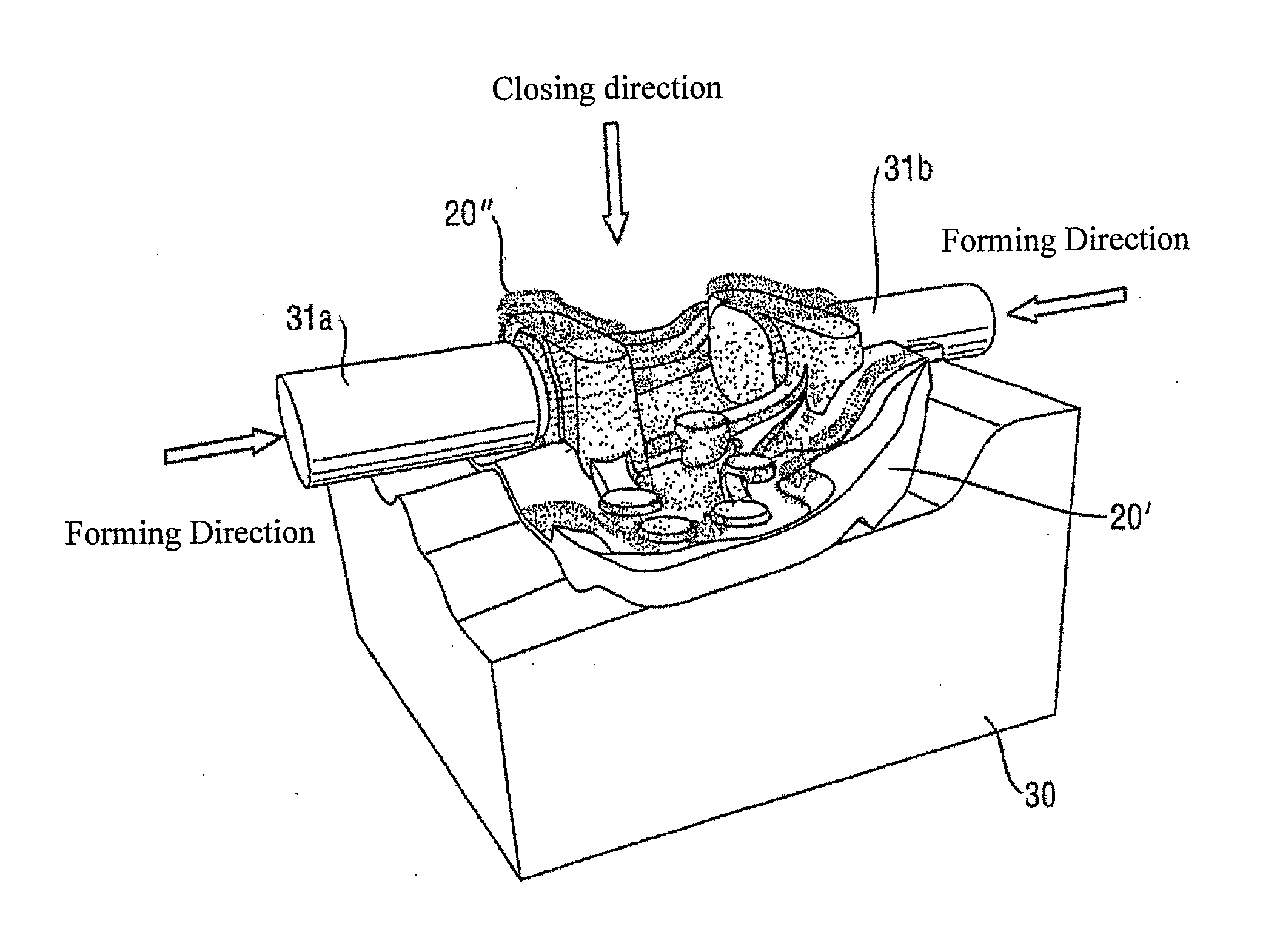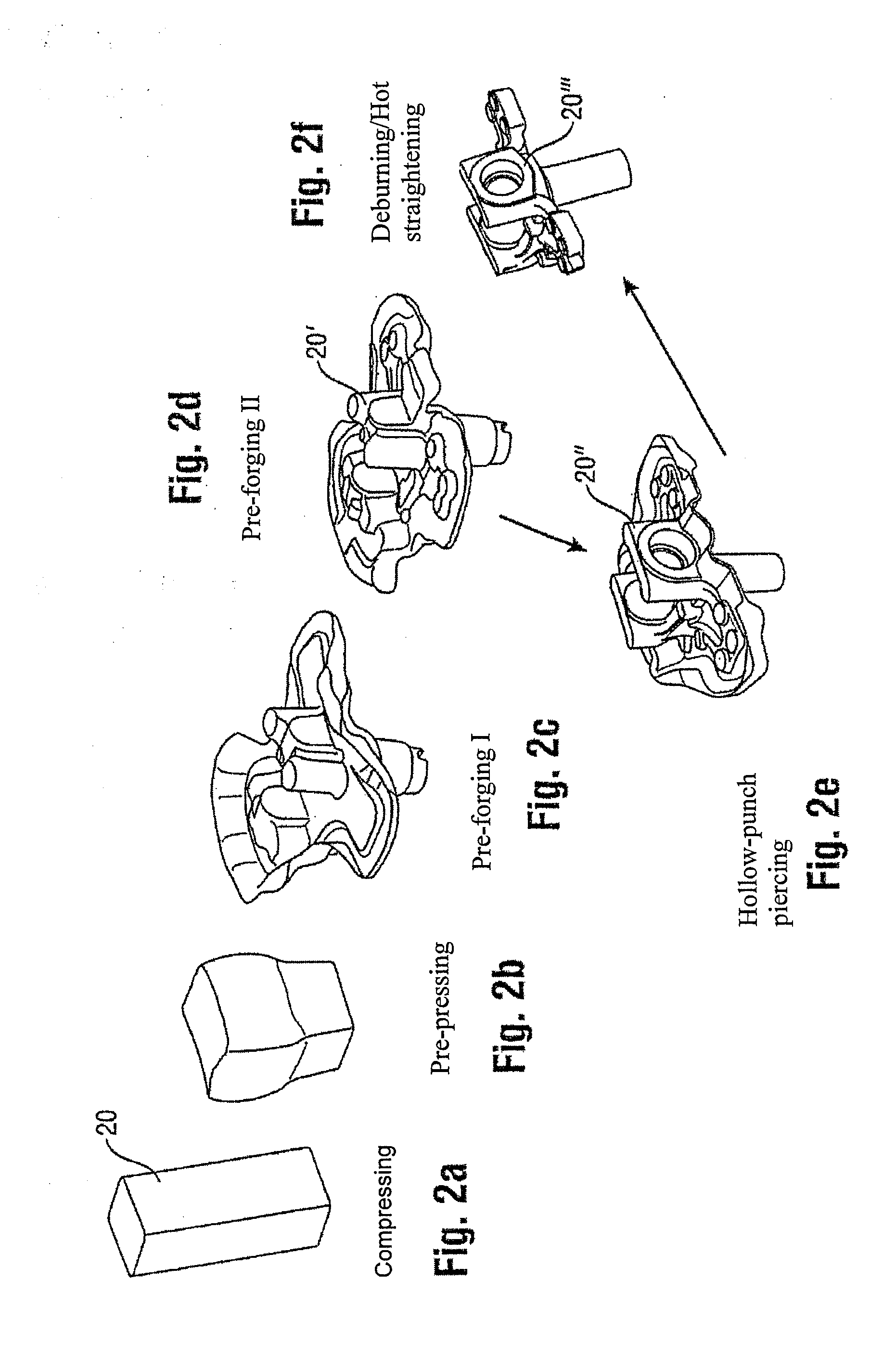Method for forming forged parts
a technology of forged parts and forged parts, applied in forging/pressing/hammering equipment, forging/hammering/pressing machines, forging/pressing/hammering machines, etc., can solve the problems of increased environmental impact, not insignificant cost increase, and cast products, and achieve efficient material displacement, high forming force, and precise shaping of forged parts
- Summary
- Abstract
- Description
- Claims
- Application Information
AI Technical Summary
Benefits of technology
Problems solved by technology
Method used
Image
Examples
Embodiment Construction
[0021]FIG. 1 schematically shows the course of a production procedure of a truck steering knuckle according to the prior art. A blank 10 made of steel is first compressed, pre-pressed and subjected to a first step of pre-forging (FIGS. 1a to c), the essential outer geometry of the component being formed being produced. During the subsequent second pre-forging step (FIG. 1d), the detailed outer contours of this intermediate product 10′ are produced by the die (but not larger than the pre-given end contour). In the final deburring or hot straightening step (FIG. 1e), the excess forging material is then removed such that the forged finished product 10″ is obtained. Since by means of the forging process, however, no complicated three-dimensional contours can be formed, such as, for example, lateral notches for bearing shells, the completed forged part 10″ must still be mechanically reworked, that is by machining. The excess material accumulated during reworking thus increases the raw ma...
PUM
| Property | Measurement | Unit |
|---|---|---|
| Temperature | aaaaa | aaaaa |
| Volume | aaaaa | aaaaa |
Abstract
Description
Claims
Application Information
 Login to View More
Login to View More - R&D
- Intellectual Property
- Life Sciences
- Materials
- Tech Scout
- Unparalleled Data Quality
- Higher Quality Content
- 60% Fewer Hallucinations
Browse by: Latest US Patents, China's latest patents, Technical Efficacy Thesaurus, Application Domain, Technology Topic, Popular Technical Reports.
© 2025 PatSnap. All rights reserved.Legal|Privacy policy|Modern Slavery Act Transparency Statement|Sitemap|About US| Contact US: help@patsnap.com



